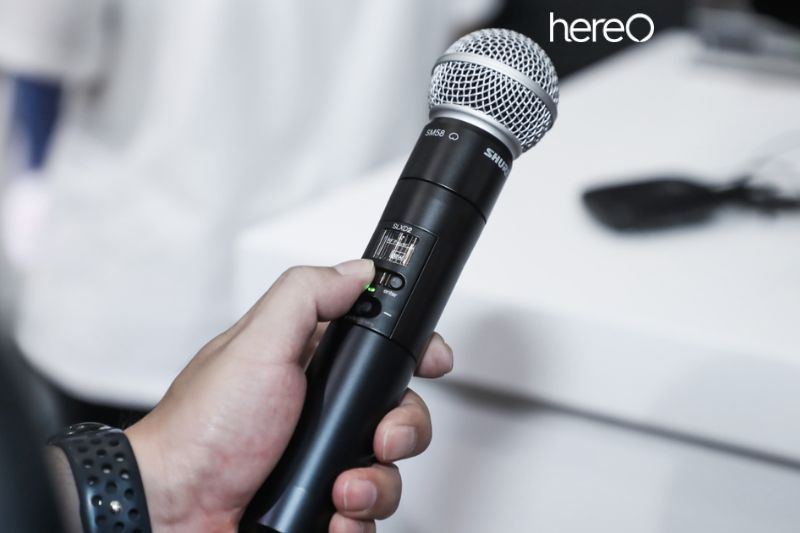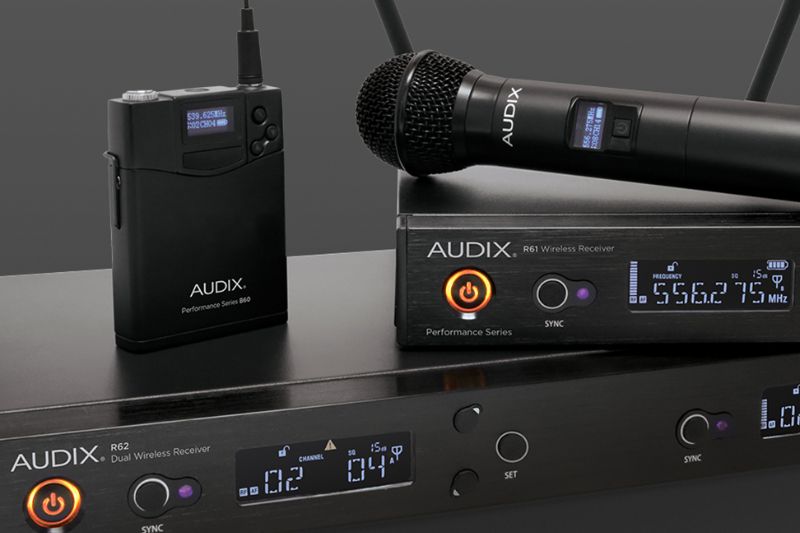Wireless microphone is an essential and convenient invention of the modern world. When buying wireless microphone for your video making purposes, you will come across the term UHF and VHF. So, what is UHF vs VHF microphones and how does it affect your microphones?
Contents
- 1 What is UHF?
- 2 What is VHF?
- 3 Why are UHF and VHF important?
- 4 Difference between UHF vs. VHF wireless microphone systems?
- 5 Advantages and Drawbacks of UHF vs VHF Microphones?
- 6 When To Use UHF or VHF microphones?
- 7 Should You Choose a VHF or UHF device?
- 8 FAQs about UHF vs VHF Microphones?
- 9 Conclusion
What is UHF?

UHF stands for Ultra High Frequency and it is a type of radio frequency that operates between 300 MHz and 3 GHz. This means that the waves are shorter and carry more info than those in the VHF frequency band.
UHF microphones are typically used in more specialized applications such as broadcasting and live sound reinforcement. UHF microphones are less prone to interference than UHF microphones, so they are perfect for areas with lots of radio frequency noise.
UHF microphones are also less likely to suffer from interference from other devices, since they operate at a higher frequency.
What is VHF?

VHF stands for Very High Frequency and is a range of frequencies between 30 MHz and 300 MHz. This means that the waves are longer and can travel a greater distance than waves in the UHF frequency band.
VHF microphones are popularly used in broadcasting, as they are able to pick up sound from a wide area, making them ideal for radio, television, and other long-range applications. They are relatively inexpensive, so they make a great option for budget-conscious users.
They are also typically smaller and more lightweight than UHF microphones, making them easy to transport and use in different locations.
Ultimately, VHF microphones offer an affordable and reliable solution to those who need to broadcast sound over a wide area. They are a great choice for radio, television, and other long-range applications, and their smaller size makes them easy to transport and use in different locations.
Why are UHF and VHF important?
Because of the wavelength, VHF and UHF wireless microphone systems are necessary. The shorter waves in the UHF frequency spectrum allow for a larger data rate, which means better sound quality.
Not only that, but shorter waves can travel faster through things like trees and buildings than longer waves in the VHF frequency region. This is significant because of the frequencies that your wireless microphone systems employ.
Difference between UHF vs. VHF wireless microphone systems?

VHF microphones typically transmit between 170Mhz and 216Mhz, but UHF microphones transmit between 450 Mhz and 952 Mhz, a tenfold difference in the frequency range that devices can employ.
This enormous spectrum of frequencies that manufacturers can employ is advantageous for UHF microphones.
Due to the decreased likelihood of coming into proximity with another UHF equipment transmitting at the same frequency, it is less susceptible to interference. Due to their widespread use and extremely constrained frequency range, VHF microphones are slightly more susceptible to this.
VHF microphones would no longer be available on the market today if there had been no trade-off in favor of UHF microphones. The cost of UHF microphones, which is comparatively high, is a drawback.
VHF microphones are still commonly used since most people do not see any substantial advantages to UHF microphones, merely a price difference. And it functions faultlessly and without any issues for the majority of VHF microphone users.
Advantages and Drawbacks of UHF vs VHF Microphones?

UHF signals are permitted a wider bandwidth, allowing for a wider audio dynamic range. Additionally, increased transmitter power is permitted (up to 250 mw). Finally, compared to high-band VHF, UHF wireless systems have access to eight times more radio spectrum.
This implies that more systems can run concurrently. This has a big advantage in concert applications and complicated setups.
As a result of the shorter UHF wavelength, transmission through walls, air, and human bodies is less effective. Because of this, a UHF transmission may have a shorter range than a VHF broadcast.
Additionally, interference and dropouts are more prevalent as a result of small metal items reflecting radio waves. However, in the UHF band, diversity receivers are particularly efficient.
Finally, the UHF range has higher signal loss in antenna cables. In UHF antenna systems, signal amplifiers and/or low-loss cable could be necessary.
When To Use UHF or VHF microphones?
VHF microphones would typically be sufficient for the majority of applications because the likelihood of encountering a device that might interfere with it is still relatively low. However, a UHF microphone is essential for anyone planning to work in locations with a high concentration of VHF transmitters.
For individuals who want to guarantee that their microphones function flawlessly, UHF microphones are also recommended.
Having two kinds of microphones is the only option in situations where they are absolutely necessary, such as in TV and radio broadcasting or concerts. so that if one isn’t functioning well, you may switch to the other.
Should You Choose a VHF or UHF device?
UHF microphones are used by those who wish to ensure that the audio they capture is as pure, sharp, and clear as possible.
VHF devices can travel nearly three times as far as UHF microphones, making them a suitable alternative if your band performs at locations and events that are farther away. VHF is best employed in instances where a device has considerable distance coverage.
FAQs about UHF vs VHF Microphones?

How does a UHF wireless microphone work?
It is sometimes referred to as a radio microphone because it contains a tiny, battery-operated radio transmitter that uses radio waves to broadcast the audio signal from the microphone to a receiver device that is close by and recovers the audio. The receiver device is cabled to the additional audio gear.
Which is stronger VHF or UHF?
Compared to UHF, VHF frequencies have stronger object penetration. VHF also has a greater range. If there were no obstructions between a VHF and a UHF wave, the VHF wave would go approximately twice as far.
What is needed for a wireless microphone?
A microphone, a transmitter, and a receiver are required. A microphone, a transmitter, and a receiver make up the three discrete parts of a working wireless microphone system.
Do wireless mics need a power source?
Batteries are required for wireless microphones in order to power the wireless transmitter and frequently the mic preamp/impedance converter (often with a battery supplied DC bias). Studio microphones that can operate on battery power but also on phantom power.
Conclusion
Overall, UHF and VHF microphones have pros and cons that should be carefully weighed when deciding which type of microphone best suits your needs. UHF microphones offer an advantage in terms of sound quality, but VHF microphones have the benefit of being more affordable.
Whichever you choose, make sure to do your research and pick the right one for you. Investing in the right type of microphone can make all the difference in creating quality videos. So, make sure to take your time to find the right one for you and your video production needs.
Thank you for reading this article from hereOfamily.
